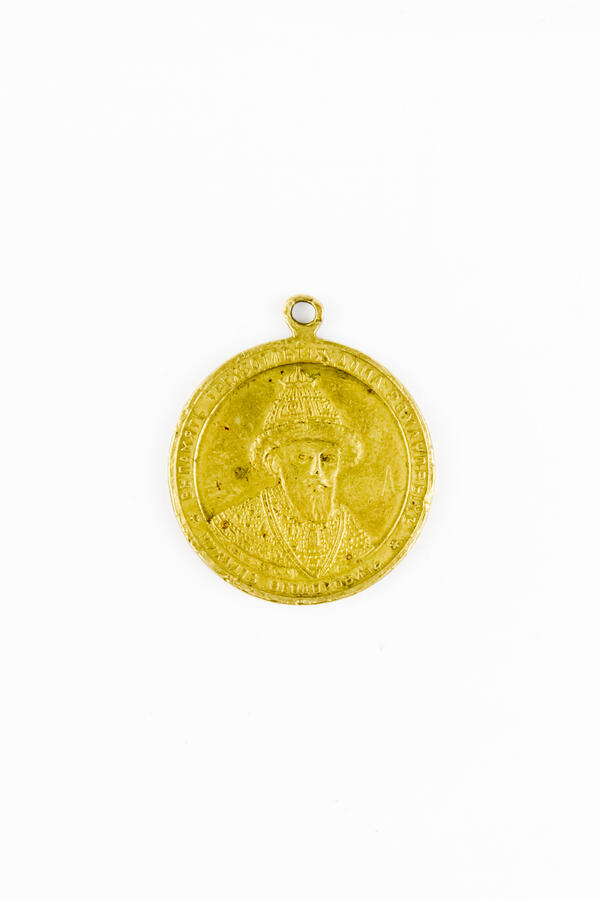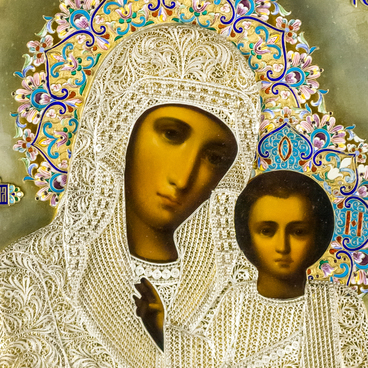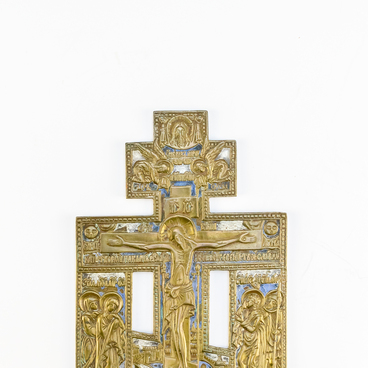The token “In commemoration of the 300th anniversary of the House of Romanov” was created in 1913 specifically for the significant date.
On February 21, 1613, Mikhail Fedorovicht was elected Tsar by the nationwide Zemsky Sobor. He was the first ruler from the Romanov dynasty. In the 20th century, preparations were made for the 300th anniversary: three years before the celebrations, government officials created a “Committee for the organization of the celebration”, which suggested that Emperor Nicholas II published the “All-Merciful Manifesto to the Population of the Empire.” The text emphasized that the Tsar’s family celebrated the most important national event in unity with the Russian people. The document was solemnly read throughout Russia on the very eve of the holiday.
The manifesto included an extensive program of charitable actions: the royal family granted benefits to the poor, announced an amnesty for thousands of prisoners, allowed small businessmen to get rid of debts, etc. The costs included free food and benefits from the state treasury, as well as donations for new church vestments.
The jubilee itself was celebrated on a large scale in all the cities of the Russian Empire: there were church services with thanksgiving prayers, local garrisons held military parades, governors and mayors organized gala dinners and receptions, historical exhibitions were opened in museum halls, and folk festivities were held on the streets. The owners of each store decorated their shop windows with flags and portraits of Tsar Mikhail Romanov and Emperor Nicholas II. Special celebrations took place in the Kostroma province, from where the first representative of the dynasty travelled to become a Tsar.
To preserve the memory of the national celebration, artisans minted more than 1.5 million special tokens at the St. Petersburg Mint in 1913–1914. The artists depicted Emperor Nicholas II in military uniform and Mikhail Fedorovich in the royal “barmas” — a wide collar decorated with sacred images and precious stones. The minting of tokens was carried out by private companies, so there were many versions of these items.
On February 21, 1613, Mikhail Fedorovicht was elected Tsar by the nationwide Zemsky Sobor. He was the first ruler from the Romanov dynasty. In the 20th century, preparations were made for the 300th anniversary: three years before the celebrations, government officials created a “Committee for the organization of the celebration”, which suggested that Emperor Nicholas II published the “All-Merciful Manifesto to the Population of the Empire.” The text emphasized that the Tsar’s family celebrated the most important national event in unity with the Russian people. The document was solemnly read throughout Russia on the very eve of the holiday.
The manifesto included an extensive program of charitable actions: the royal family granted benefits to the poor, announced an amnesty for thousands of prisoners, allowed small businessmen to get rid of debts, etc. The costs included free food and benefits from the state treasury, as well as donations for new church vestments.
The jubilee itself was celebrated on a large scale in all the cities of the Russian Empire: there were church services with thanksgiving prayers, local garrisons held military parades, governors and mayors organized gala dinners and receptions, historical exhibitions were opened in museum halls, and folk festivities were held on the streets. The owners of each store decorated their shop windows with flags and portraits of Tsar Mikhail Romanov and Emperor Nicholas II. Special celebrations took place in the Kostroma province, from where the first representative of the dynasty travelled to become a Tsar.
To preserve the memory of the national celebration, artisans minted more than 1.5 million special tokens at the St. Petersburg Mint in 1913–1914. The artists depicted Emperor Nicholas II in military uniform and Mikhail Fedorovich in the royal “barmas” — a wide collar decorated with sacred images and precious stones. The minting of tokens was carried out by private companies, so there were many versions of these items.



